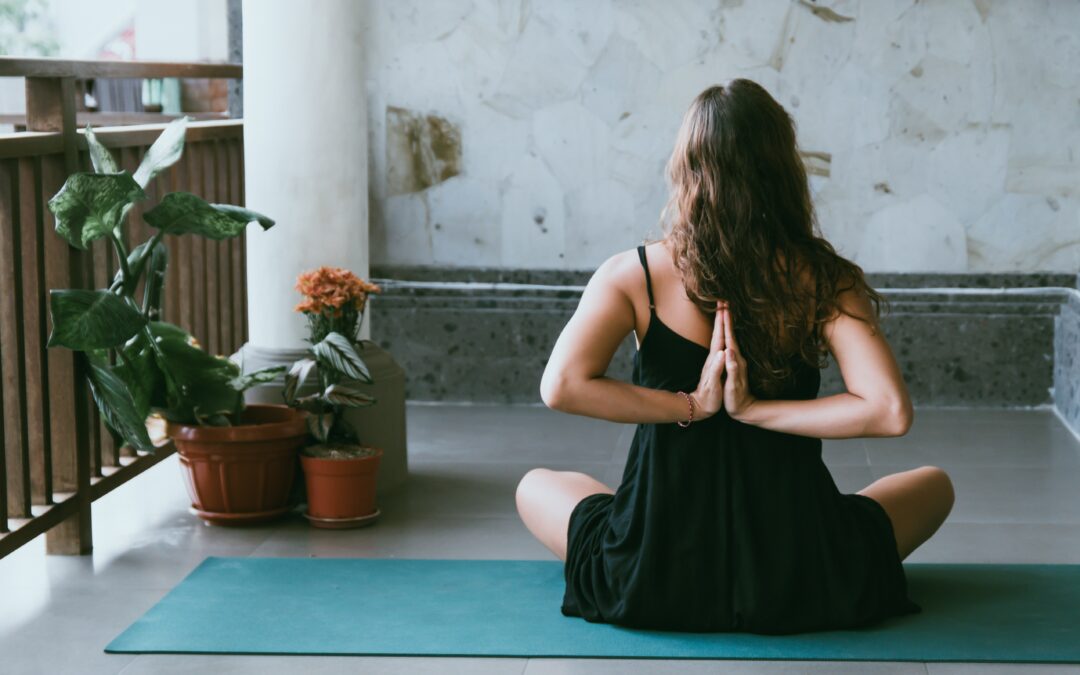
by bendigitals | Sep 4, 2023 | health wealth
In today’s fast-paced world, finding time for self-care and physical fitness has become increasingly important. Yoga and Pilates are two popular mind-body practices that can help improve strength, flexibility, and overall well-being. But which one is right for you? Let’s delve into the key differences between Yoga and Pilates to help you make an informed decision.
Yoga vs. Pilates: Origins and Philosophy
Yoga originated in ancient India and has been practiced for thousands of years. It incorporates physical postures, breath control, and meditation to achieve a union of the mind, body, and spirit. Yoga focuses on creating harmony and balance within oneself and improving overall well-being.
Pilates, on the other hand, was developed by Joseph Pilates in the early 20th century. It was initially devised as a rehabilitation technique and has since evolved into a comprehensive exercise system. Pilates emphasizes core strength, muscle control, and precision of movement. It aims to improve stability, posture, and overall physical strength.
Exercise Techniques
When it comes to the exercise techniques employed in Yoga and Pilates, there are some noticeable differences. In Yoga, practitioners flow through a series of postures, also known as asanas, which are held for varying durations. These postures help to increase flexibility, build strength, and improve balance. Yoga incorporates breath control, meditation, and relaxation techniques to enhance mental well-being and reduce stress.
Pilates, on the other hand, primarily focuses on core strength and stability. It uses controlled and precise movements that target specific muscle groups, often utilizing specialized equipment such as reformers and resistance bands. Pilates exercises are designed to improve overall body alignment, posture, and coordination.
Yoga vs. Pilates; Physical Benefits
Both Yoga and Pilates offer a variety of physical benefits, but they target different areas of the body. Yoga helps to lengthen and strengthen muscles, increase flexibility, and enhance overall body awareness. It can also improve cardiovascular health and promote relaxation, reducing stress levels. The practice of Yoga is known to provide a meditative and calming effect.
Pilates, as a predominantly core-focused practice, helps to improve posture, alignment, and overall muscle tone. It targets the deep stabilizing muscles of the abdomen and back, providing a strong foundation for movement. Pilates can help alleviate back pain, improve flexibility, and increase overall strength and endurance.
Yoga vs. Pilates: Mental Benefits
While both practices offer significant physical benefits, they also contribute to mental well-being in different ways. Yoga places a strong emphasis on breath control, meditation, and mindfulness. This helps to quiet the mind, reduce stress, and promote relaxation. The practice of Yoga encourages self-awareness, fosters a sense of inner peace, and can enhance mental clarity.
Pilates, although not traditionally associated with mindfulness, offers a form of moving meditation. The focus on precise movement and control necessitates concentration and mental presence. Pilates can help improve focus, reduce anxiety, and increase overall body awareness.
When deciding whether to choose Yoga or Pilates, it ultimately comes down to personal preference and individual goals. If you are looking for a holistic practice that combines physical exercise, breath control, and meditation, then Yoga may be the right choice for you. Yoga offers a calm and meditative approach that not only enhances physical fitness but also promotes mental well-being.
On the other hand, if you are seeking to build core strength, improve posture, and enhance overall physical stability, Pilates may be a better fit. Pilates emphasizes targeted exercises that can help rehabilitate injuries, improve muscle tone, and increase overall body strength.
It’s worth noting that many individuals find benefit in combining both practices, as they complement each other well. Both Yoga and Pilates promote conscious movement, enhance mind-body connection, and contribute to overall physical and mental well-being.
Moreover, whether you choose Yoga, Pilates, or decide to incorporate aspects of both into your fitness routine, both practices offer a multitude of benefits. Experimenting with each and finding what resonates with you and your body is key. Ultimately, the most important thing is to find a practice that not only helps you achieve your physical fitness goals but also provides a sense of balance, peace, and well-being in your life.
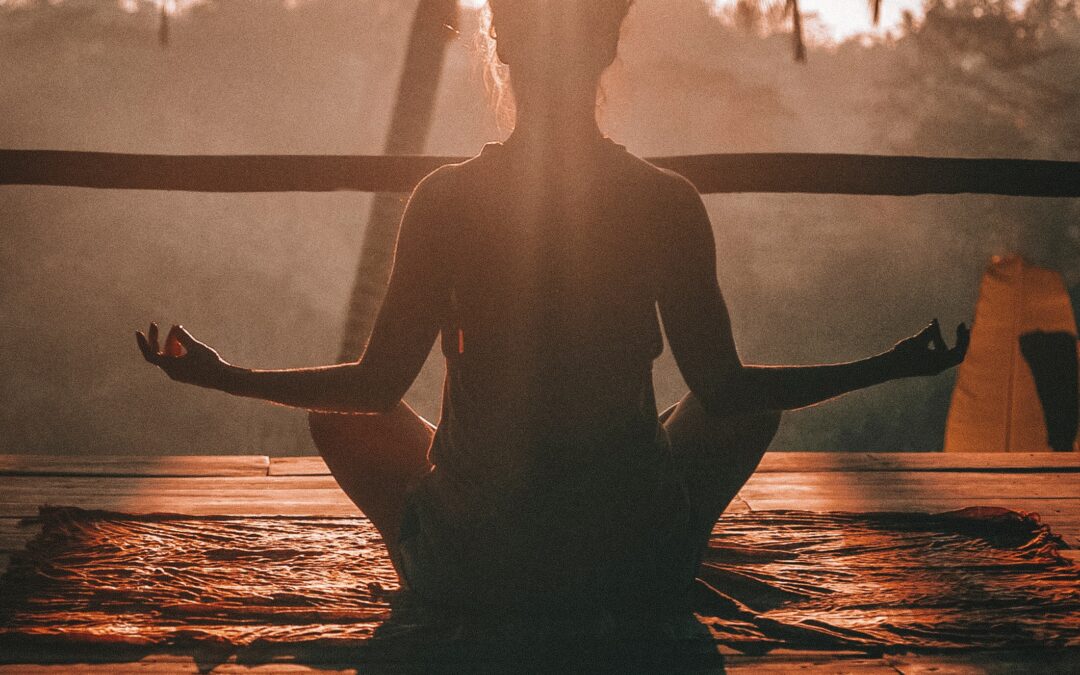
by bendigitals | Sep 1, 2023 | health wealth
In order to enhance general well-being and reduce stress, yoga is a holistic practice that includes physical postures, breathing exercises, meditation, and mindfulness practices of stress relief and relaxation. It is well known for its ability to lower tension and encourage relaxation because of the following factors.
Stress relief and relaxation Physical Relaxation
Reduces tension and tightness in the muscles and the body. It is a state in which the physical body feels at ease and comfortable muscles are less constricted. It is possible to attain physical relaxation through a variety of methods and exercises with Yoga Asanas (Postures) which particular yoga postures made to stretch and relieve tension in various muscle groups. This position encourages flexibility improvement while reducing muscle tightness with elasticity of mucles and joints that create way of relaxation.
Stress relief and relaxation Progressive Muscle Relaxation
This method entails gradually tensing and relaxing various bodily muscle groups. People who practice determined muscle release become more conscious of their muscles.
Exercising the breath: Deep breathing techniques, such as diaphragmatic breathing or yoga’s pranayama, relax the muscles and encourage physical calm. The parasympathetic nerve system of the body, linked to relaxation, is activated when one takes deep breaths.
Massage and bodywork: By exerting pressure and kneading muscles, professional massage and bodywork techniques like Swedish massage or shiatsu can reduce muscle tension and encourage physical relaxation.
To relax and relieve tension, deep breathing is the deliberate practice of taking long, calm breaths. When you practice deep breathing, you effectively take charge of your breathing making it slower than your regular shallow breathing patterns. Here is an explanation of what this means:
Conscious and Controlled Breathing: This entails consciousness of breathing and actively controlling it. You purposefully regulate each breath’s depth and pace rather than breathing voluntarily and involuntarily.
Yoga refers to numerous breath control techniques such as pranayama. To accomplish various results, such as relaxation and mental clarity, these techniques use precise patterns of inhaling, holding, and exhaling air. Engaging in breathing, through practices like pranayama, basically signals your body to change from a state of increased awareness (the “fight or flight” reaction”) to a state of peace and relaxation. The parasympathetic nervous system, which is in charge of encouraging rest and recovery, mediates this change. Stress relief and relaxation is wealth.
Stress relief and relaxation Mind-Body Connection
Strong mind-body connections can be developed through yoga. By concentrating their attention on their breath and physical actions, practitioners develop the ability to be fully present at all times. By assisting people in letting go of concerns about the past or the future, mindfulness helps people experience less mental stress. When you practice deep breathing, you effectively take charge to make it slower than your regular shallow breathing patterns. Stress relief and relaxation is wealth.
stress relief and relaxation: Conscious and Controlled Breathing
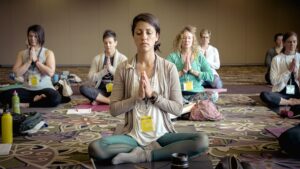
stress relief and relaxation
This requires consciousness of breathing and actively controlling it. You intentionally regulate each breath’s depth and pace rather than breathing voluntarily and involuntarily.Being in the moment is similar to pausing life’s steady onward motion. You concentrate on the present moment rather than obsessing over what occurred yesterday or what might occur tomorrow. Entail enjoying each moment as it develops.
Stress hormone regulation
Regular yoga practice has been shown to lessen cortisol and adrenaline levels, two stress chemicals. This hormonal control helps the body maintain balance by reducing the physiological effects of stress. Think of the body’s alert system as being the stress hormones cortisol and adrenaline. When you’re under stress or navigating a challenging scenario, they become active.
It almost feels like your body is asking you to pay attention. Stress relief and relaxation is wealth.Equilibrium Maintenance: Your body maintains balance just like a sensible melody in a song. It’s the perfect amount of stress and relaxation. You need to be in this balanced state if you want to be healthy.
Stress relief and relaxation Physiological Effects of Stress Reduction
Controlling your stress hormones is like stopping a storm from becoming a hurricane. Stress is still present from time to time but it doesn’t turn into a complete hurricane. Your muscles are still calm, your heart rate doesn’t change, and your mind doesn’t work too hard.
Stress relief and relaxation: Improved Sleep
In plain English, getting better sleep with the use of yoga is like discovering the key to a long, deep sleep key that opens a world of comfort. Here’s how it operates:
Sleep Issues: Picture those evenings when getting any sleep seems like hunting fireflies in the dark. Stress usually makes it tough to unwind and go off to sleep. Thoughts and anxieties flit about like annoying insects.
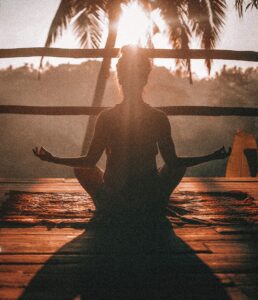
stress relief and relaxation
Think of yoga as your calming bedtime lullaby. Yoga is like covering yourself in a warm, familiar blanket. Your night routine includes gentle stretches and deep breaths.Yoga can assist in quieting the mind in a similar way to how a soft breeze might settle a tree’s agitated leaves. As you concentrate on your breathing and relaxing motions, your problems from the day start to slowly escape. It is similar to lowering the volume of your chaotic thoughts.
Imagine your body as a taut rubber band that is gently unwinding to help you relax. Yoga asanas and stretches relieve the physical tension accumulated throughout the day. Your body becomes more like a cozy bed luring you to sleep as your muscles relax.
The Sleep-Relaxation Loop: Yoga is like a positive feedback loop that improves the quality of your sleep. Stress reduction leads to improved sleep.
It’s important to remember that different people may respond differently to yoga’s ability to reduce stress. What is effective for one person might not be as effective for another. Additionally, to get the full rewards of yoga for stress alleviation, consistency in practice is essential. Yoga’s capacity to encourage relaxation and lessen stress can be further increased by combining it with other stress-management techniques including a healthy lifestyle and social support.
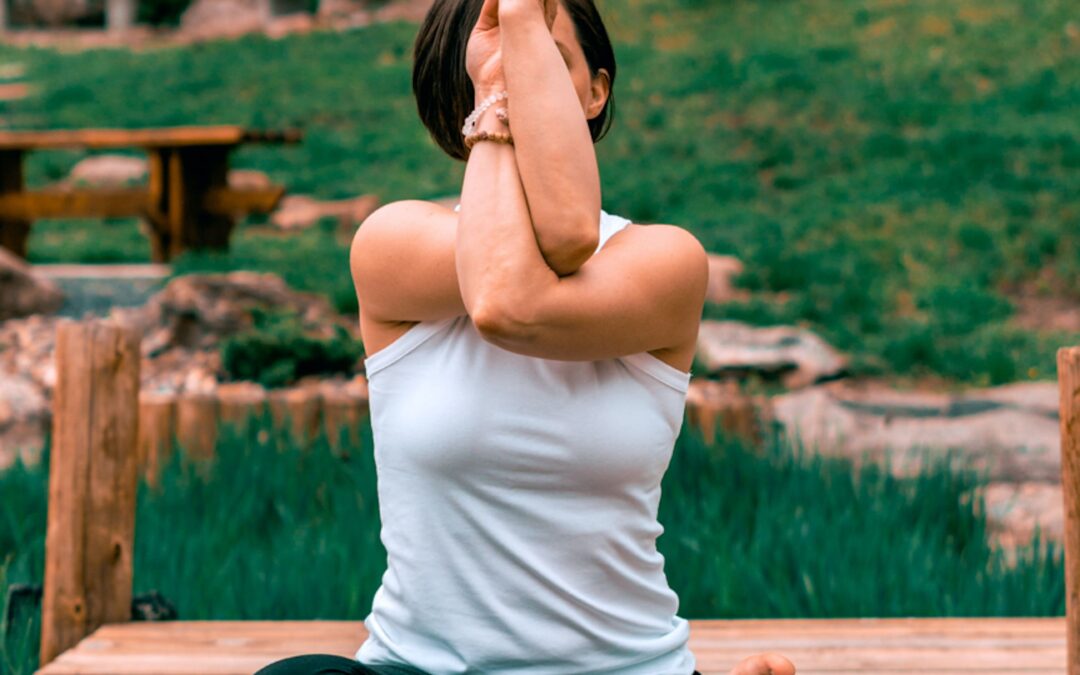
by bendigitals | Aug 31, 2023 | health wealth, Wellness
Health Benefits of yoga: Yoga has long been beneficial for both the body and the psyche. Are there any further health advantages to yoga besides increasing flexibility, mastering yogi breathing methods, and building stronger muscles? The best part is that you don’t always need to practice yoga for years to see results; just a few weeks will do (spoiler alert: there are, and some are very shocking!). What you should know about yoga for health is provided here.
Health Benefits of yoga: It lessens persistent inflammation:
Acute inflammation is normal, such as the redness around a cut. However, persistent or chronic inflammation can be harmful and is the cause of many chronic diseases, including cancer, type 2 diabetes, obesity, and many others. Yoga reduces important inflammatory markers (including C-reactive proteins and cytokines) and increases chemicals that reduce inflammation, according to numerous studies.
It’s also impressive how much of a difference practicing yoga for just a short while can make. One study included a portion of an adult population in a 10-day yoga intervention including stress-reduction lessons. Cortisol (the stress hormone) and numerous other substances that promote inflammation were found at lower levels in those who practiced yoga and stress reduction after days.
Stress decreases as a result:
Chronic stress can inhibit the immune system and reduce your body’s reaction to an illness-causing invader, in addition to harming our mental health (more on that below). Yoga practice, particularly the breathing exercises taught there, can help lower cortisol levels.
Yoga encourages and teaches deep, regular breathing, which encourages the release of hormones that calm us down. Over time, for frequent yoga practitioners, there is less activation in the area of the brain that produces norepinephrine in reaction to stress and panic (they also develop feelings of camaraderie and bonding, and friends are wonderful for stress reduction!).
In a 2018 study, workers were divided into two groups: one group underwent a 16-week yoga intervention, while the other underwent eight so-called “normal” workweeks before beginning an 8-week yoga intervention. After the trial, both groups reported feeling less stressed and anxious and overall better off.
Health Benefits of yoga: It raises mental health.
Yoga benefits your mood and outlook whether you have a diagnosable mental health illness. According to research, doing yoga boosts the creation of GABA, serotonin, and dopamine, all hormones and neurotransmitters with built-in antidepressant characteristics. In other words, mental health problems like schizophrenia, anxiety, sadness, and PTSD have been linked to reduced levels of GABA.
Additionally, clinically depressed people have benefited from regular yoga sessions. In one study, participants either received medication, engaged in yoga, or did both. Both yoga-practicing groups experienced an increase in cortisol levels, and surprisingly, the yoga-only group experienced a decrease in depression survey results. call us at the yoga bar Yaletown (778) 715-5554.
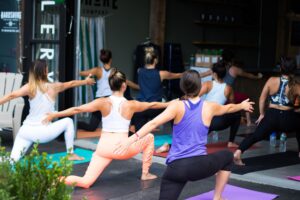
health benefits of yoga
Yoga can assist in controlling chronic inflammation essential for heart health. However, yoga also has certain additional benefits for heart health. In a study of individuals with heart failure, those who practiced yoga for around three months (instead of only receiving standard medical care) saw improvements in several critical markers and lowered heart rate and blood pressure.
Interestingly, those who were deemed “pre-hypertensive” did not experience a lowering in blood pressure with yoga, according to another study that found people with high blood pressure might drop their pressure with yoga in addition to blood pressure medication.
Better sleep is encouraged.
A review study published in the 2017 issue of the journal Children found that yoga practice increases melatonin, which aids in our ability to fall asleep and stay asleep. Yoga is believed to enhance sleep quality in addition to quantity. The neurotransmitter GABA, which is crucial for mental health, is also involved in sleep regulation. Yoga poses that increase GABA synthesis are also beneficial for your nightly sleep.
Health Benefits of yoga: It works equally well as “traditional” exercise.
Yoga involves bodily postures, or asanas, similar to exercises used for physical conditioning. However, other aspects of yoga, such as controlled yogic breathing and meditation, which contribute to the previous benefits, are less “exercise-like.” However, when researchers reviewed the research on yoga versus exercise, they concluded that yoga is equally as good for mental and physical health as a fitness exercise.
In some cases, yoga is a better kind of physical activity.
As an illustration, doing yoga for eight weeks increased mood, reduced anxiety, and verbal aggression in two separate studies (one involving middle-aged and elderly persons and the other involving youngsters).
Yoga has various health advantages, from enhancing heart health to encouraging better sleep quality. So go out there and enroll in a class or get an app to practice at home.One final point: if you have a condition that requires medication or medical attention,
yoga is not a replacement for those things and never should be. However, yoga has the potential to be a preventive measure or a supplement to prescription medication and medical care. call us at the yoga bar Yaletown (778) 715-5554.
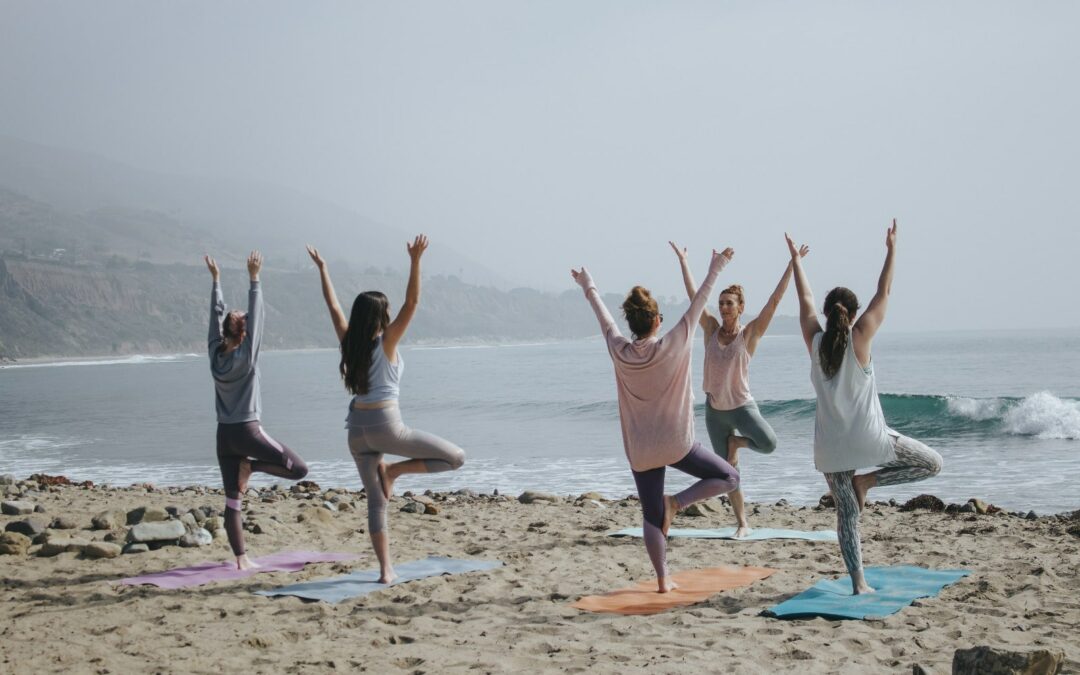
by bendigitals | Aug 30, 2023 | health wealth, Wellness
Inspired Harmonizing Holistic Well-Being: Uncovering the Interplay of Yoga
Harmonizing Holisitc well-being to Since they have roots in many different cultures and spiritual traditions, yoga, meditation, and mindfulness practices are closely related and have been practiced for centuries.
The enhancement of mindfulness, kundalini effects, and mystical experiences were all found to be associated with meditation, yoga, contemplative prayer, or a combination of these practices. However, meditation had strong associations and may be the source of the associations of yoga and prayer with these outcomes.
Meditation and yoga:
Yoga is a holistic discipline that combines asanas (physical postures), pranayama (breath control), meditation, and moral guidance to foster physical, mental, and spiritual well-being. As “Dhyana” in Patanjali’s Yoga Sutras, meditation is a fundamental component of yoga seen as one of its limbs. Yoga practitioners can employ meditation to clear their minds, become more self-aware, and deepen their spiritual ties.
Harmonizing Holistic Well-Being: Meditation and mindfulness
The discipline of mindfulness involves being present in the moment without passing judgment. One way to develop mindfulness is through meditation. Focusing on your breath, physical sensations, thoughts, or any other object of awareness during meditation is known as mindfulness. People can improve their capacity to remain present, lower stress levels, and better manage their thoughts and emotions. Regular practice of mindfulness meditation can bring numerous benefits. Harmonizing Holistic well-being.
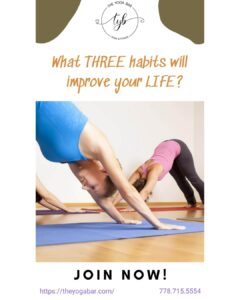
Harmonizing Holistic well-being
Mindfulness and yoga:
The practice of yoga frequently includes mindfulness components. Individuals are advised to engage their body and breath when performing yoga poses. This improved perception fosters mindfulness. Additionally, some yoga techniques, such as Yin Yoga, focus heavily on maintaining poses for lengthy periods, which encourages reflection and awareness.
A synergistic approach to general well-being can be achieved by combining yoga, meditation, and mindfulness.
Harmonizing Holistic Well-Bein: Benefits of Integration
Physical Health: Yoga improves balance, strength, and flexibility. It can enhance body awareness, posture, and physical comfort combined with meditation and mindfulness.
Clarity of Mind: Mindfulness and meditation exercises can help lower stress, anxiety, and racing thoughts. These advantages are complemented by yoga’s emphasis on breath and movement. Harmonizing Holistic well-being.
Emotional Regulation: Mindfulness can help with emotion management. Better emotional self-regulation can result from the self-awareness that yoga and meditation build.
Spiritual Development: All three practices provide avenues for spiritual discovery and development, helping practitioners who they are and how they fit into the universe.To maintain a positive attitude in trying circumstances by spirituality. You become a more responsible person full of love, care, and sharing when you are anchored in the Self. Your inner serenity radiates forth as a result. The deeper tensions in your body are still present even though you sleep off your exhaustion.
Harmonizing Holistic Well-Bein: Practice Advice
Start Slowly: If any of these techniques are new to you, begin with shorter sessions and lengthen them gradually. Consistency Matters: Consistent practice produces superior outcomes. Aim for weekly or daily schedules. Consider learning from seasoned instructors to ensure optimal skills and direction. Harmonizing Holistic well-being.
Generalization:
In general, a meaningful journey toward holistic well-being is provided by the complex interaction between the practice of yoga, meditation, and mindfulness. These age-old practices in various traditions and civilizations form a potent synergy that unites the body, mind, and soul.
Yoga educates us on physical postures, controlled breathing, and moral ideals with its all-encompassing philosophy. At its root, meditation appears as a component of yoga, asking us to go within, silence the noise in our minds, and develop self-awareness. Yoga’s meditation strengthens our awareness of the present moment and reveals the way to inner peace.
The integration of yoga, meditation, and mindfulness helps us negotiate challenges with resilience, embrace times of delight with gratitude, and nurture an ongoing process of self-discovery as we travel through life. Through perseverance and practice, we come to harmonize the symphony of body, mind, and spirit; this harmony not only improves our own lives but also has an impact on those around us.
In the end, discovering the relationship between yoga, meditation, and mindfulness invites us to set out on a transforming journey that brings us home and reveals the limitless levels of inner peace and wholeness that exist inside.
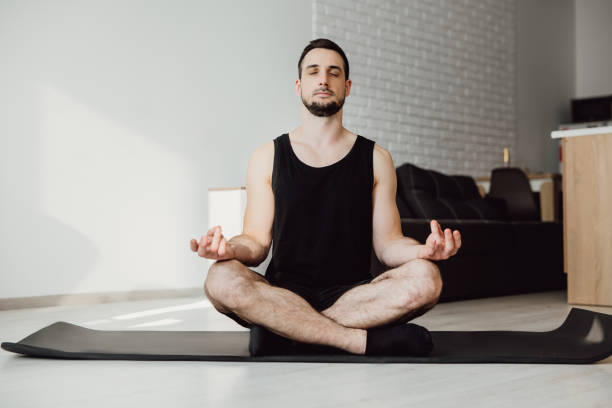
by bendigitals | Aug 29, 2023 | health wealth, Wellness
Beginner to intermediate-level yoga instruction. Basic yoga tutorials advice and guidelines for various yoga poses. Always be aware of your body and avoid overexerting yourself because yoga is about mindful practice.
Basic yoga tutorials: Mountain Pose
At the mat, posture with your toes touching and a slight space between your heels. Starting with your toes flex, distribute your weight among your feet’s four corners. You should assign your weight equally and elevate your kneecaps with your thigh muscles. On inhalation, roll your shoulders toward your ears; on exhalation, roll them down toward your back.Your posture will improve if you straighten your spine. Hang your arms beside your torso, hands lightly engaged and pointing toward the floor. Consider a chord pushing the crown of your head upward for a second.
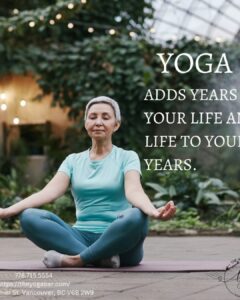
The Yoga Bar Yaletown near me
Seated Pose:
Starting from this stance, spread your weight evenly among the four corners of your feet. Divide your weight in half. Lift your kneecaps with the help of your pelvis and thigh muscles.Inhale with your shoulders rolled up near your ears; exhale with them down toward your back. Standing upright will help you have better posture.
Hang your arms by your torso with your hands pointed down toward the floor while softly engaging them. Imagine for a moment that a cord is pulling your head forward. Deep inhalations extend the spine, and when you exhale, you should lower your tailbone even more. You have between 30 and 60 seconds to maintain your position. To leave, either sit on the mat or stand up straight.
Basic yoga tutorials: Downward Dog
Begin on your hands and knees in the proper tabletop position. With your hands shoulder-width apart, position your knees precisely beneath your hips. With no effort, bring your hips into an inverted V position. Draw the shoulder blades in, place your feet hip-distance apart, and squeeze your hands firmly into the carpet. Take a long, slow breath in. Look in the direction of the navel while letting your head hang open.
While keeping the legs straight, each heel should be as nearly flat as it can be on the yoga mat.To help you align correctly when your spine is around your knees. The spine must extend first,
while maintaining the position take a long breath. You can get out of the downward dog position by releasing each knee and each foot as you exhale. While on your yoga mat, return to a resting place just like a child pose or a tabletop position.
Camel Pose:
Yoga Pose, or “Ustrasana” in Sanskrit, is designed to resemble a camel. It’s a backbend where you kneel on the floor, arch your back, and reach for your feet. Here’s how to make the description of Camel Pose more personable:
Consider yourself a graceful camel in a desert. Kneel and feel the warmth of the soft sand under your knees.
Your body is your canvas, and when you raise your heart, you become the graceful arch of the magnificent creature of the desert.
Let your chest expand as you inhale slowly, just as the dunes do when they reach for the sky. Allow your hands to float down the sides of your body as you exhale, finding the heels of your feet as if they were the distant oases you were looking for. It feels like a gentle desert breeze brushing against your skin.
Basic yoga tutorials: Shoulder Stand Pose:
Consider that you are preparing the stage for a tranquil concert. Like the curtain closing after a show, lie on your back. Your palms are facing down while your arms hang at your sides. Similar how an actor connects to the stage, feel the connection between your body and the mat. As the curtain opens to reveal the next scene, take a few deep breaths and let them expand your chest.
Engage your core and raise your legs slowly upward as you exhale. Imagine the exhilaration of the initial scene as with anticipation, and your body creates a right angle with the ground, forming the letter “L. “Slowly lower your legs behind you while you move your hands to your mid-back for additional support. Your feet reaching for a fictitious last note, and your torso is a lovely arc. The experience has a lasting impact, much like the final scene in a play.
Boat Pose:
Slowly lean back and your feet off the ground as you regain balance. Your legs take on the role of the boat’s prow, gracefully rising above the water. Deeply inhale while picturing the lake’s soft waves that are beneath you.
Run your arms parallel to the ground as you extend them forward. Your body instinctively shapes itself into a V shape to cut through the water like a boat’s hull.
Like an experienced sailor steers the vessel through the currents, your stomach clenches. As it steadies your movement, feel the strength in your abdomen. Just like the boat glides effortlessly across the calm waves, keep your breath steady. You’re encapsulating the moment as you walk between effort and ease. As you raise your chest, your heart expands like a sail as it meets the breeze.
Imagine yourself in this position as your ship’s captain, expertly managing life’s challenges. You are in charge while giving your breath and your path your surrender.
Conclusion
From the first tentative stance to the expert body and soul expressions, yoga is a lifelong journey. Every exercise serves as a chapter, every stance as a word, and every breath as a sentence. The story explores the importance of mental flexibility, heart expansion, and spiritual union in addition to physical flexibility. You write and read about your revolutionary journey as you turn each page. The climax also leaves room for more exploration, serving as a last reminder that the trip is limitless and the tale will always go on.

by bendigitals | Aug 25, 2023 | health wealth, Wellness
Why YOGA important: Why Is Yoga Vital to Daily Life?’
Stretching and targeting different types of muscles and joints while incorporating yoga into your everyday practice can increase your flexibility. ‘Why is Yoga Important to Daily Lifestyle?’
FLEXIBILITY AND STRENGTH
Applying Yoga to your daily routine can improve your flexibility through stretching and to be flexible by targeting any kind of muscles and joints. It also requires supporting your body weight in many ways which can lead you to improve the strength of your muscles and endurance. Enhancing your balance or challenging your poses can help you improve your stability and coordination over time.
Why YOGA important: STRESS REDUCTION

The Yoga Bar Yaletown near me
Yoga can reduce your stress by deep breathing, meditation, and relaxing techniques that trigger the body’s response to relaxation, which leads to calming your state of mind.
PAIN RELIEF ALIGNMENT and BLOOD PRESSURE
It also emphasizes the proper alignment of your body posture by applying it in your daily life. Doing yoga every day can alleviate muscle tension, reduce some kinds of pains like back pain, and improve your joint mobility. Yoga supports the alertness of your mind in all aspectsYour blood pressure can be lowered and your stress levels can be reduced by practicing yoga. Additionally, it can help with breathing exercises, which will increase lung capacity, respiratory function, and relaxation. Also, it facilitates blood circulation and the supply of nutrients and oxygen to various regions of the body.
GROUP vs. SOLO PRACTICE
Yoga can be practiced alone or in a group, and both offer their own advantages. Participants in group yoga courses receive encouragement, inspiration, and motivation from the class’s collective energy.
If you’re trying to mingle or make new friends, it can also be advantageous for you to join group lessons for yoga.
Also available is solo yoga. You have the option to practice yoga alone if that is how you prefer to suit your needs and preferences. Why YOGA important: Performers have the option to select the tempo, duration of poses, and other approaches with their own solo practice.
Your best self-reflection and self-awareness are also encouraged by solo yoga practice, which enables you to concentrate more on your breathing, bodily sensations, posture, as well as your thought process.
The flexibility of solo yoga practice is one of its benefits. You may design your own practice, choose your own pace, and make adjustments whenever you choose. To escape the burden of traffic commuting or other responsibilities, you can practice yoga whenever and wherever you like. However, whether you choose to practice yoga is a personal decision.
ADAPTABILITY
Yoga’s adaptability is one of its benefits. By incorporating yoga into our daily lives, we may create a calm space for our bodies, minds, and emotions. Additionally, it tests your ability to balance and coordinate to boost your body’s stability. Benefits include a reduced risk of falls, especially for older persons.
For instance: It may seem like a terrific example of discipline to go to the gym every morning at 5:00, and it is. However, it requires a lot more mental fortitude to acknowledge, deal with, and respond to what is actually needed at the time.
Even though I believe in morning rituals and routines, I recently discovered that I was unusually exhausted from traveling and teaching, so I had to modify my practice by allowing myself to sleep as long as my body needed, move slowly, and so perform my rituals five hours later than usual.
My initial reaction was to be angry with myself for not accomplishing what I had set out to do: wake up at 0500 every day for two weeks, journal, meditate, and exercise.
PATIENCE AND PROGRESS
It is a crucial reminder that the benefits of practicing yoga daily may not appear right away. To ensure that you practice safely and efficiently as a beginner, it is advised that you start off gently and look for a skilled instructor.
Unlimited yoga, fitness, spin.
Unlimited yoga, fitness, spin and gym.
Expires on 3 month – single session.











Recent Comments